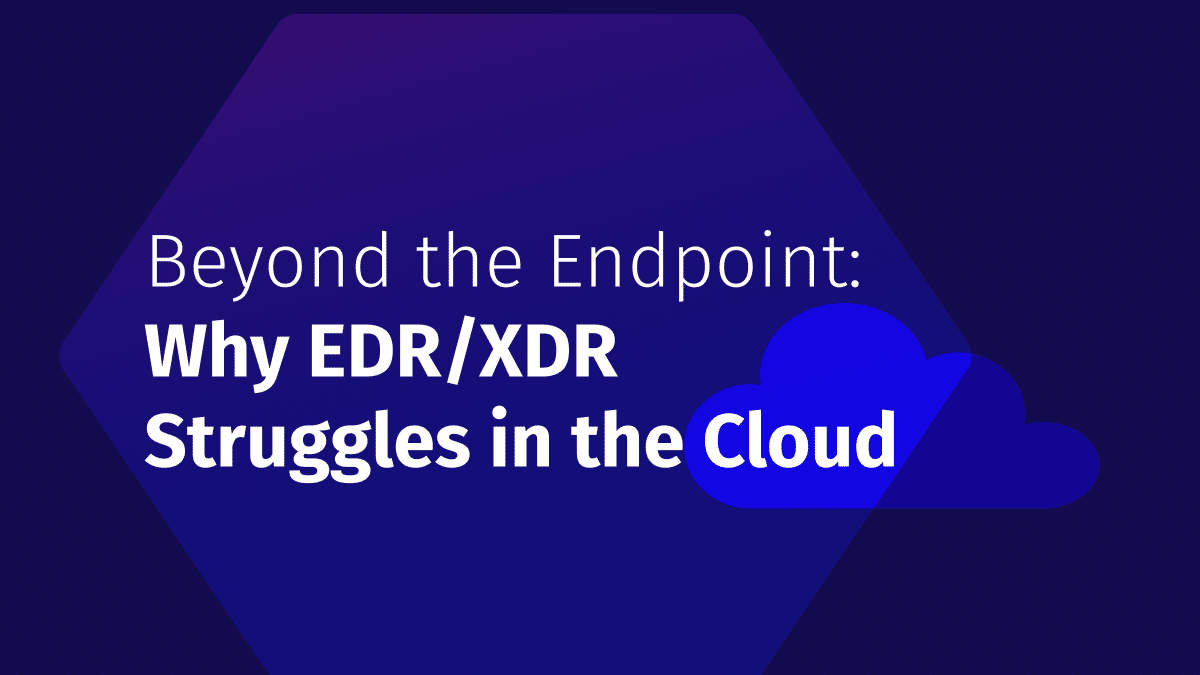Beyond the Endpoint: Why EDR/XDR Struggles in the Cloud
The cybersecurity landscape has dramatically shifted with the rise of cloud computing. While Endpoint Detection...

Oct 1, 2024
Almost all organizations either rely on cloud computing or are planning to adopt cloud computing technologies soon to ensure their businesses remain competitive and gain an edge over the competition. As businesses increasingly rely on cloud services to manage their operations, the complexity of these environments continues to grow, introducing new challenges in maintaining security and compliance. This is where Cloud Security Posture Management (CSPM) comes into the picture
CSPM is a crucial tool that helps organizations continuously monitor and manage the security posture of their cloud environments. One of the key components of CSPM is the inventory of cloud resources. This inventory provides a comprehensive overview of all assets within the cloud environment, offering visibility into what exists, how it’s configured, and where potential vulnerabilities may lie.
The importance of maintaining an accurate and up-to-date inventory in cloud security cannot be overstated. Creating an effective CSPM Inventory is key, since a comprehensive inventory layer creates the necessary depth to create a practical and impactful CSPM.
Imagine your cloud infrastructure as a vast warehouse storing valuable goods and assets.
Your cloud environment represents the warehouse itself, housing an array of goods (data, applications, configurations) vital to your organization. It takes into account all resources, including virtual machines, databases, storage buckets, containers, network configurations, identity and access management (IAM) roles, and security policies.
CSPM Inventory acts as the inventory management system, meticulously tracking and cataloging every item within the warehouse.
Different goods in the warehouse correspond to various elements in your cloud environment (VM instances, storage buckets, networks). CSPM Inventory identifies and categorizes each item, much like how it classifies cloud resources based on security risks and compliance standards.
Imagine CSPM Inventory as a set of surveillance cameras and sensors strategically placed throughout the warehouse. These tools monitor inventory movement, detect anomalies, and provide real-time insights. Similarly, CSPM Inventory offers comprehensive visibility into your cloud environment, providing a real-time snapshot of everything that exists within the environment.
CSPM inventory differs significantly from traditional asset management in several key ways:
In a multi-account, multi-cloud environment encompassing multiple management teams, maintaining comprehensive visibility and control over all cloud assets is a daunting challenge. Blind spots in asset management within such diverse and distributed infrastructure inherently pose security and compliance risks. Existing asset discovery and mapping processes often rely on manual intervention, leading to inefficiencies and gaps in coverage, exacerbating the complexity in effectively managing and securing the cloud environment.
CSPM inventory tools use automated discovery techniques to identify and list all cloud resources. This involves querying cloud provider APIs, inspecting infrastructure-as-code (IaC) templates, and monitoring changes in the environment. Each asset is cataloged with details such as its type, location, configuration, associated security policies, and ownership.
Effective CSPM inventory management requires seamless integration with cloud providers such as AWS, Azure, and Google Cloud.
Real-time asset discovery ensures continuous identification and cataloging of cloud resources, keeping the inventory current and accurate.
Assets within a CSPM inventory can be tagged and classified based on various criteria such as environment (development, testing, production), sensitivity (public, confidential, restricted), and compliance requirements (PCI-DSS, GDPR, HIPAA). This allows for more granular management and tracking of resources.
CSPM inventory captures rich configuration details. As such, CSPM inventory provides detailed insights into their configurations. This includes security groups, firewall rules, encryption settings, and access controls. Thus, enabling that evaluation cloud resource configurations against security standards and detects deviations in real time.
CSPM inventory systems continuously monitor for changes in the cloud environment. Any addition, deletion, or modification of resources is tracked, and alerts can be generated if unauthorized or non-compliant changes are detected. This is crucial for maintaining security and ensuring that the inventory remains up-to-date.
CSPM inventory can enhance other security tools – threat detection, incident response, and overall cloud security.
The future of CSPM inventory is set for significant evolution, driven by several key trends that are transforming the landscape of cloud security management. As cloud environments become more complex and dynamic, the demand for smarter, more proactive CSPM solutions is growing. Sophisticated inventory management is the cornerstone of this.
Automation in CSPM will become more advanced, enabling real-time remediation of misconfigurations and enforcing complex security policies consistently across cloud environments. This will streamline cloud security management and accelerate response times.
CSPM inventory helps optimize cloud spending by identifying underutilized or idle resources for downsizing or termination. It offers rightsizing recommendations based on usage patterns, ensuring resources are cost-effective. Additionally, CSPM tools detect cost anomalies, such as unexpected spending spikes due to misconfigurations, enabling prompt corrective actions to control costs.
CSPM inventory is the cornerstone for effective CSPM that maintains the security, compliance, and efficiency of cloud environments. By providing real-time visibility into assets, collecting configuration data, and feeding information to other security tools, CSPM inventory helps organizations mitigate risks, prevent misconfigurations, and maintain compliance with industry standards. As cloud ecosystems continue to grow and evolve, having a comprehensive and automated CSPM inventory is essential for effectively managing the complexity of modern cloud infrastructure. If you know everything you have and can easily track changes, you can proactively secure them to ensure a strong security posture.

The cybersecurity landscape has dramatically shifted with the rise of cloud computing. While Endpoint Detection...

In today’s landscape of microservices, Kubernetes, and cloud environments, attacks can come from multiple vectors,...

In this blog post, we will introduce the concept of behavioral Cloud Application Detection &...